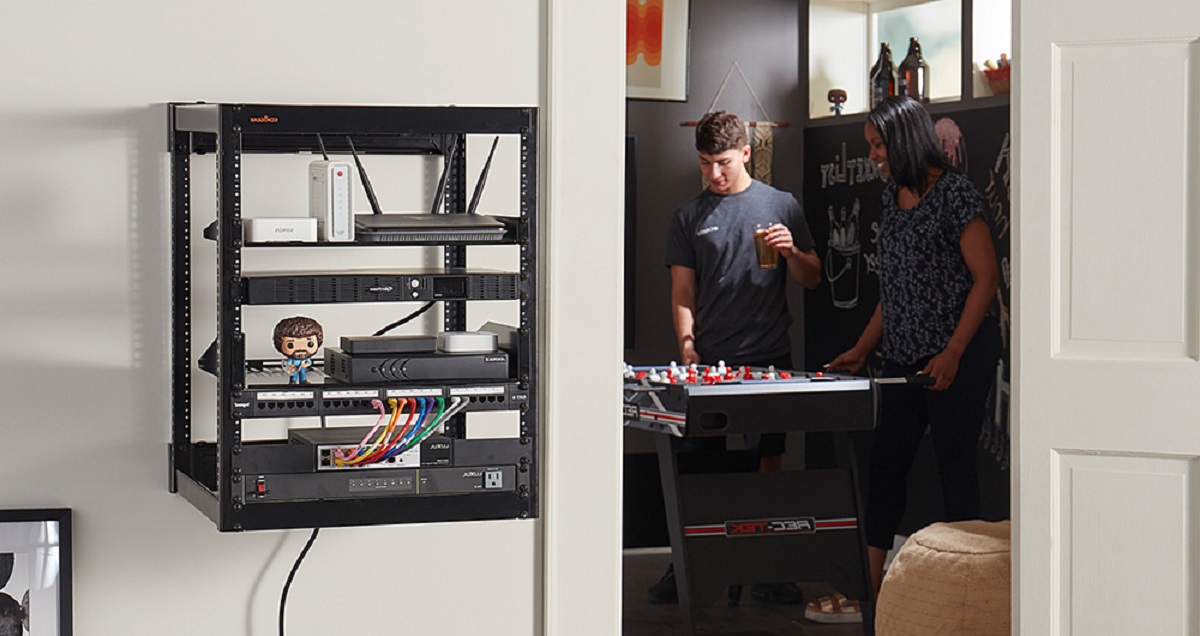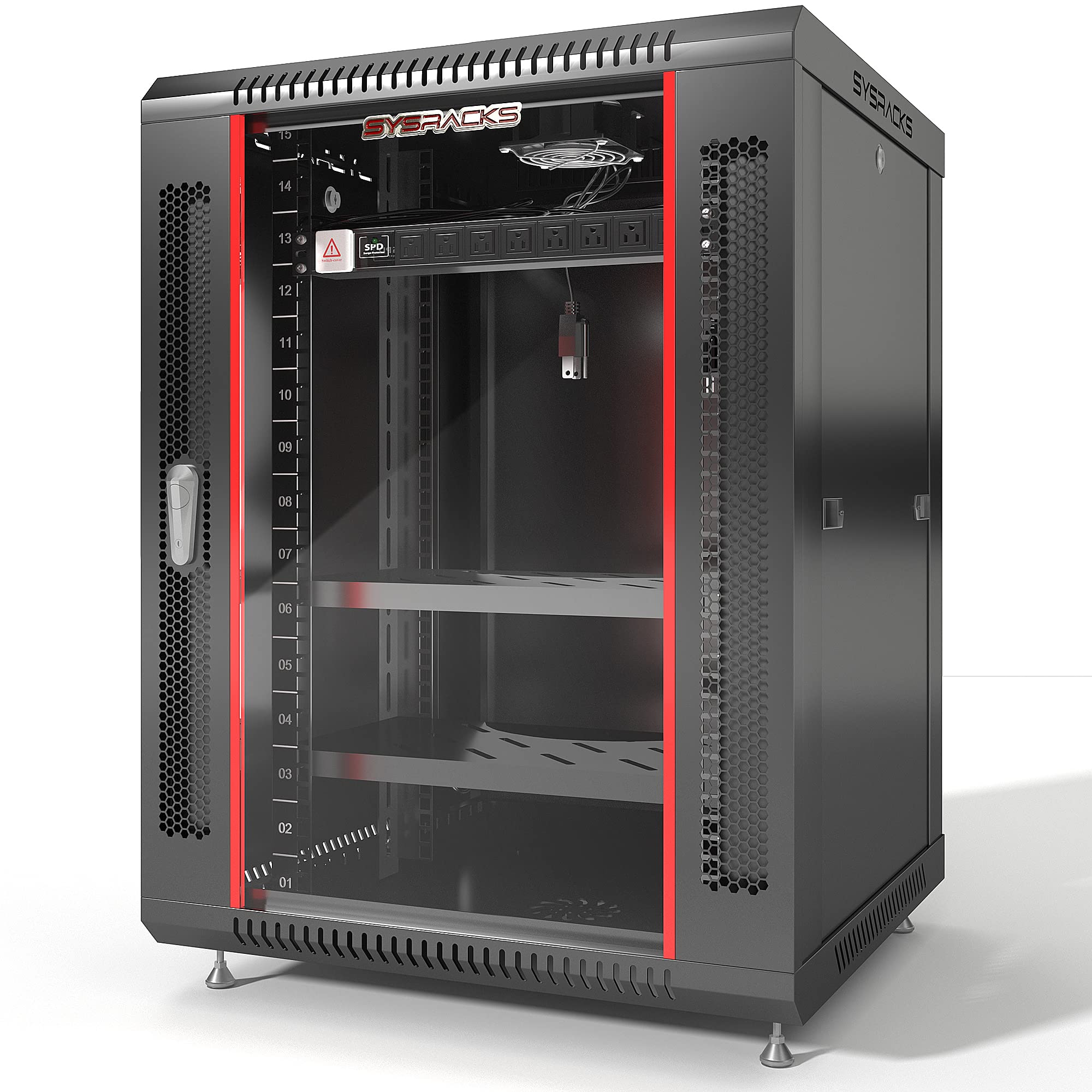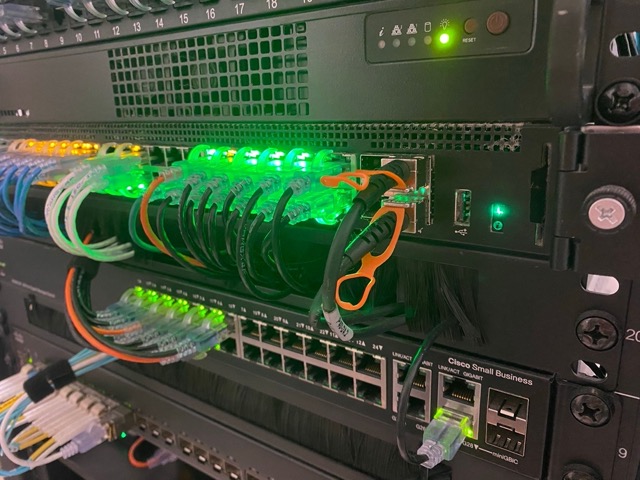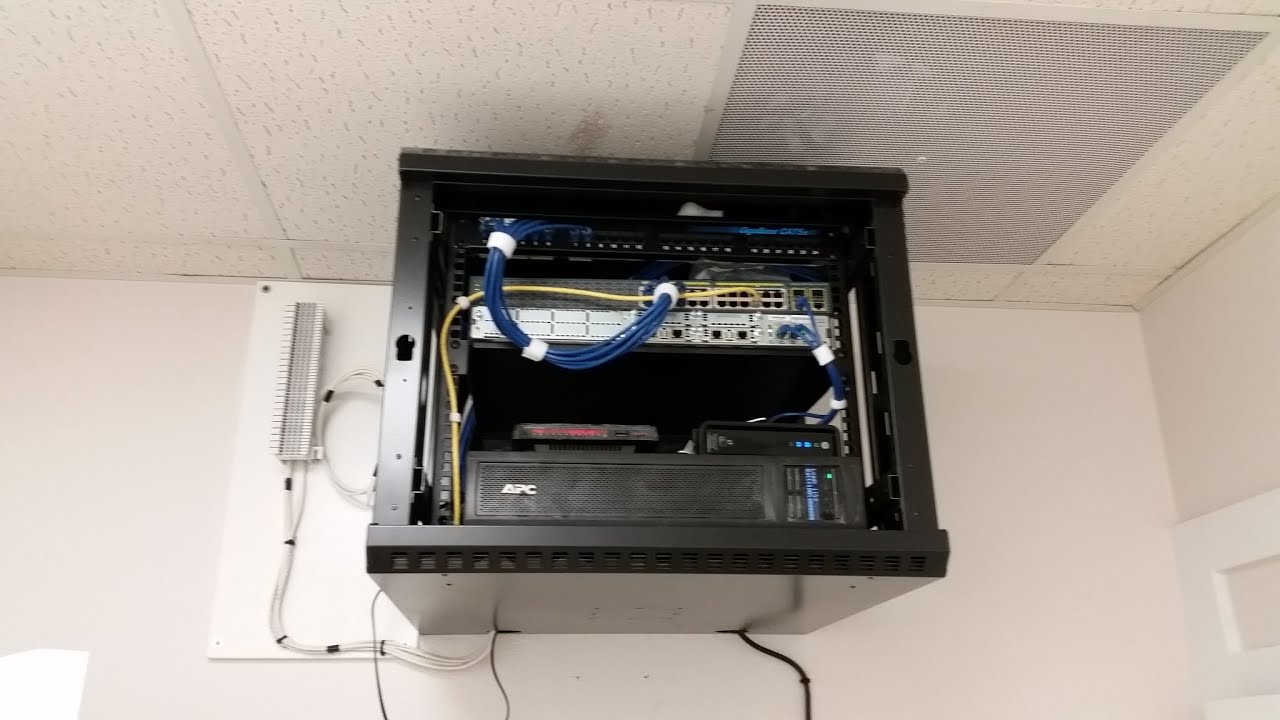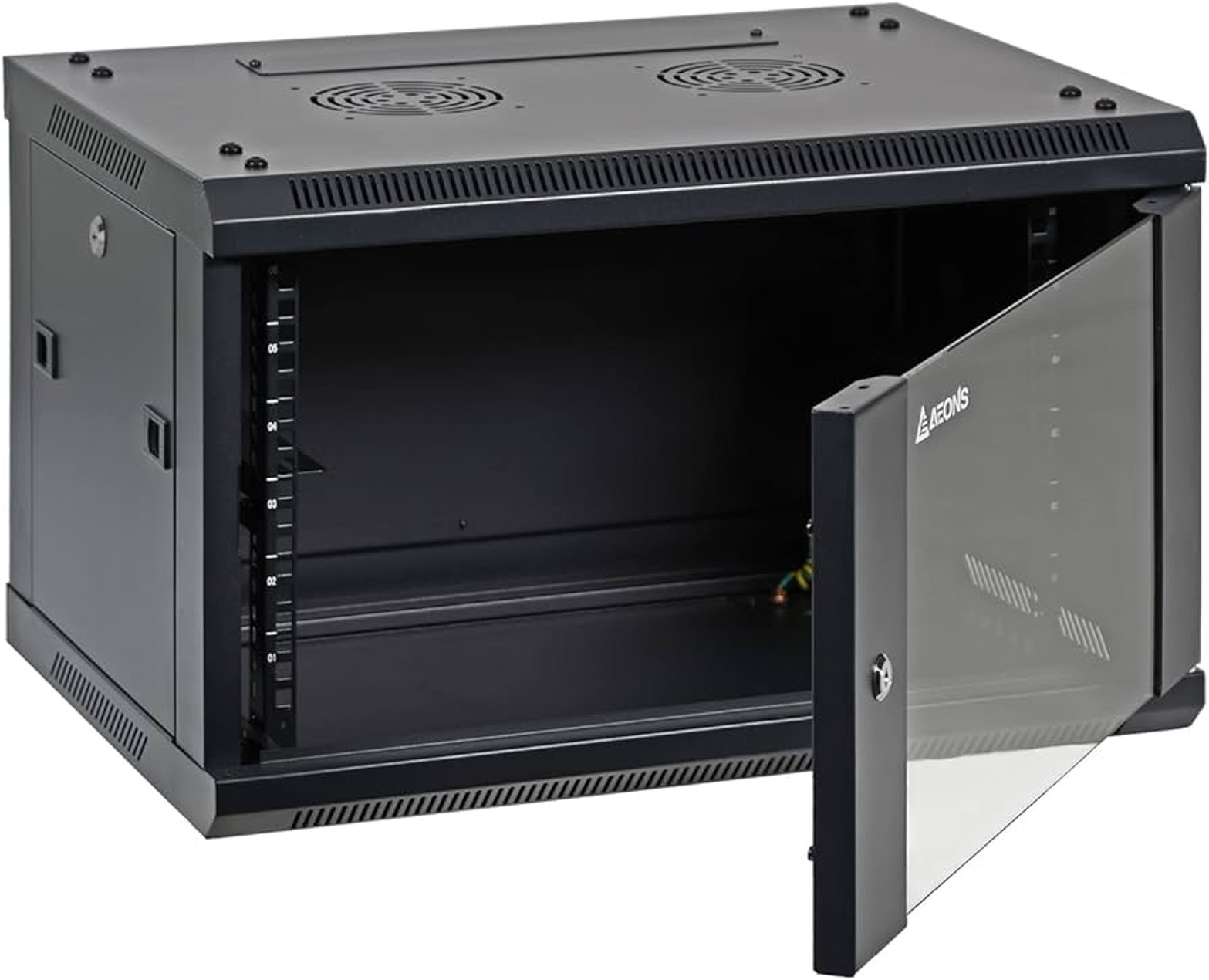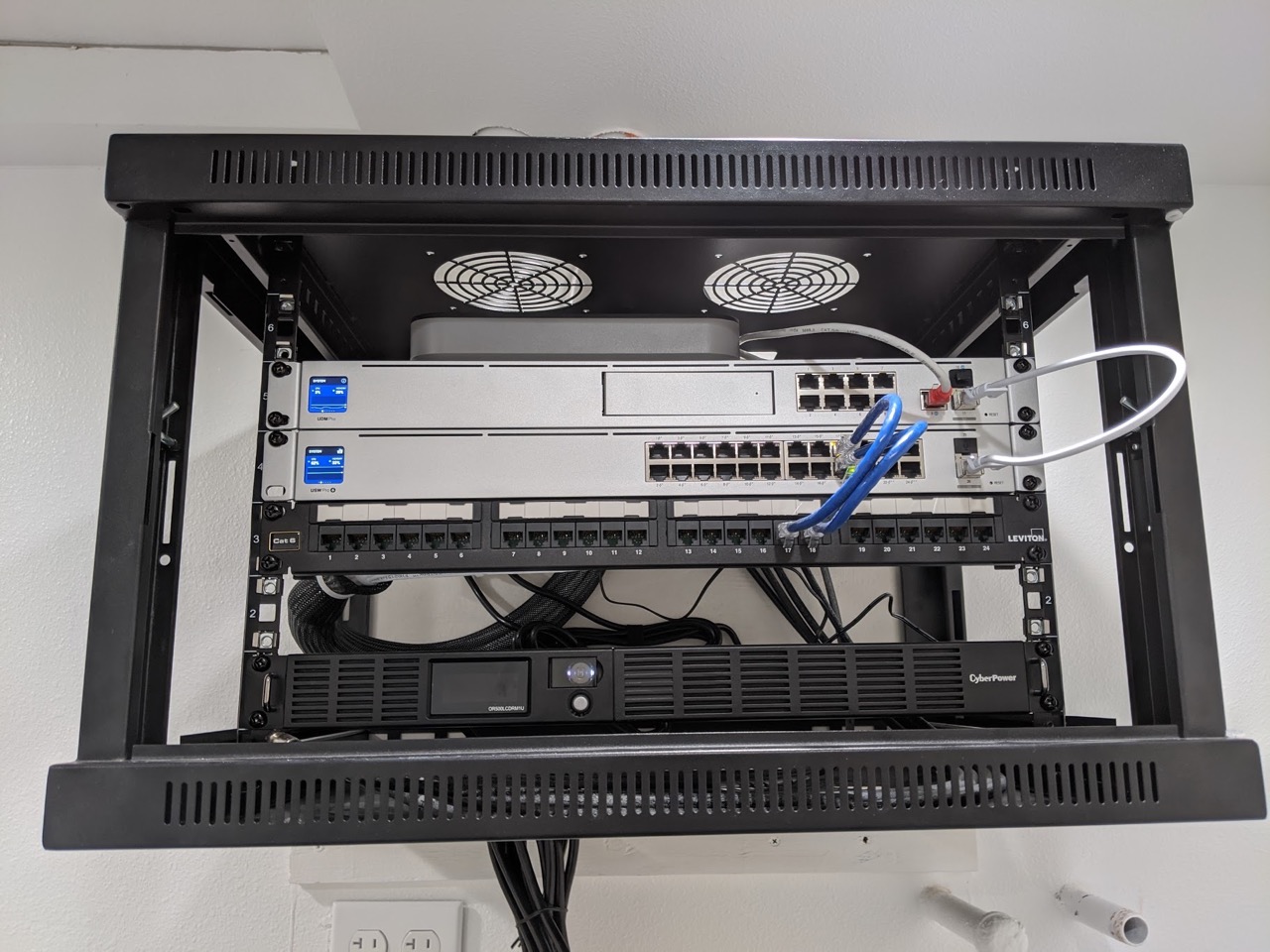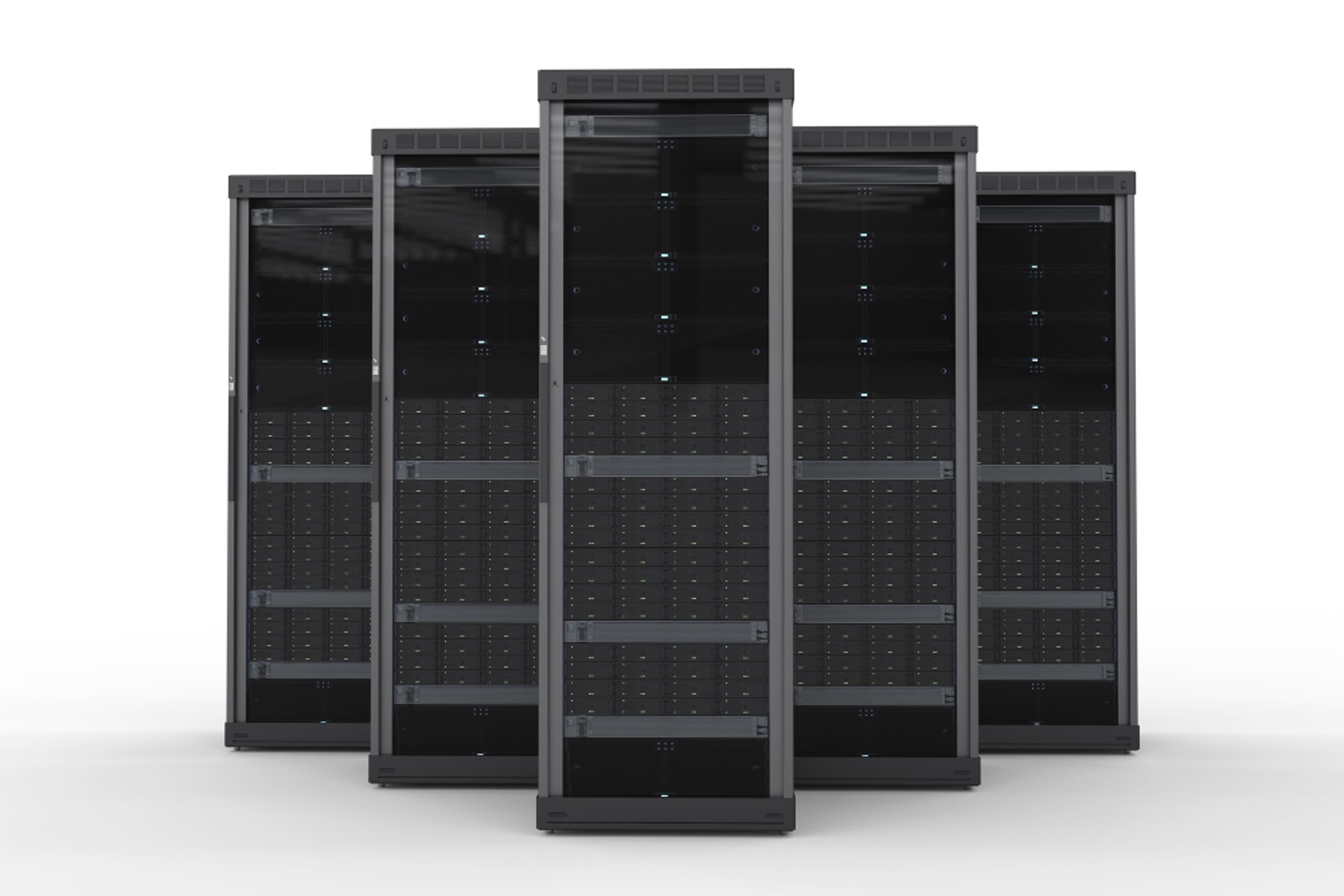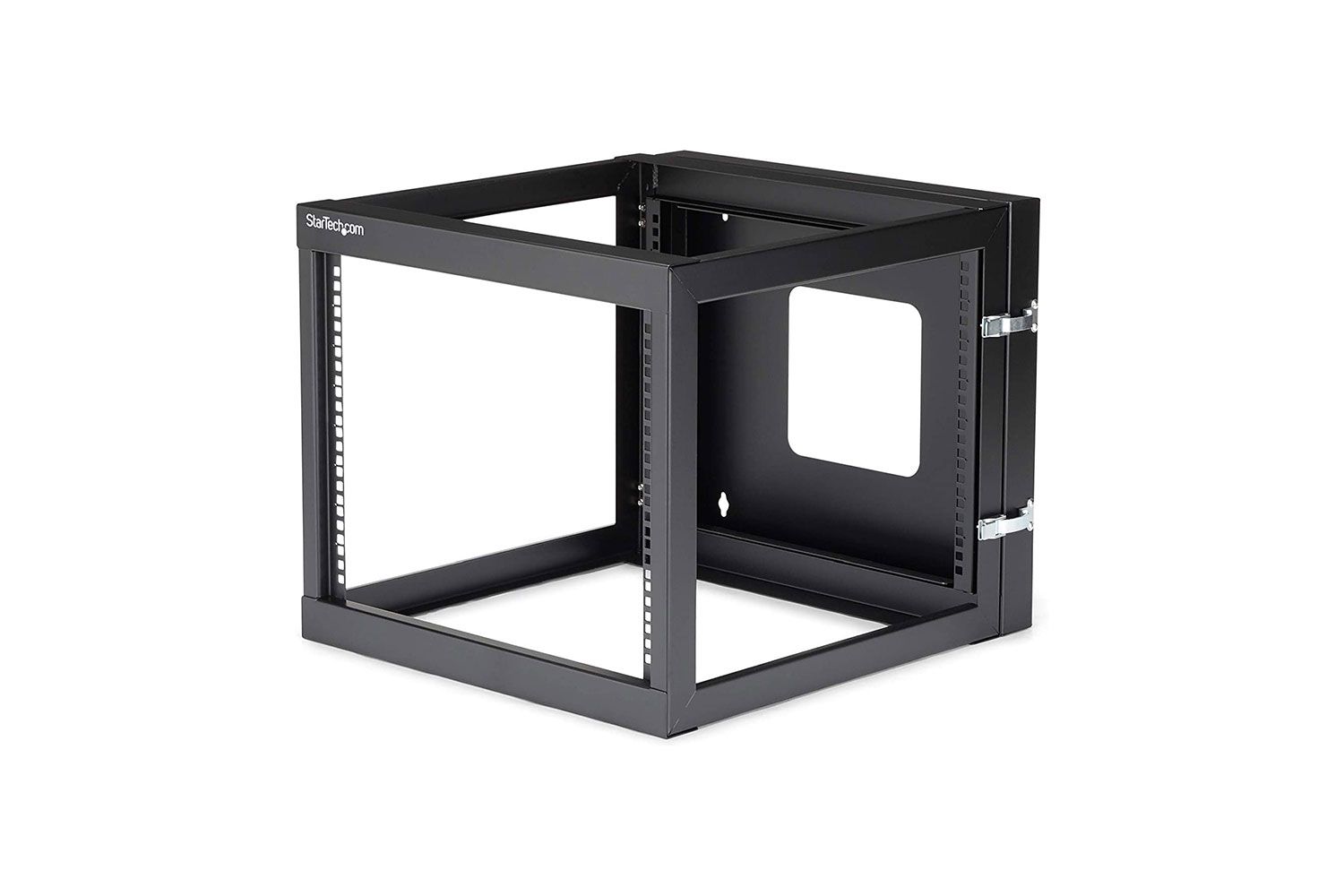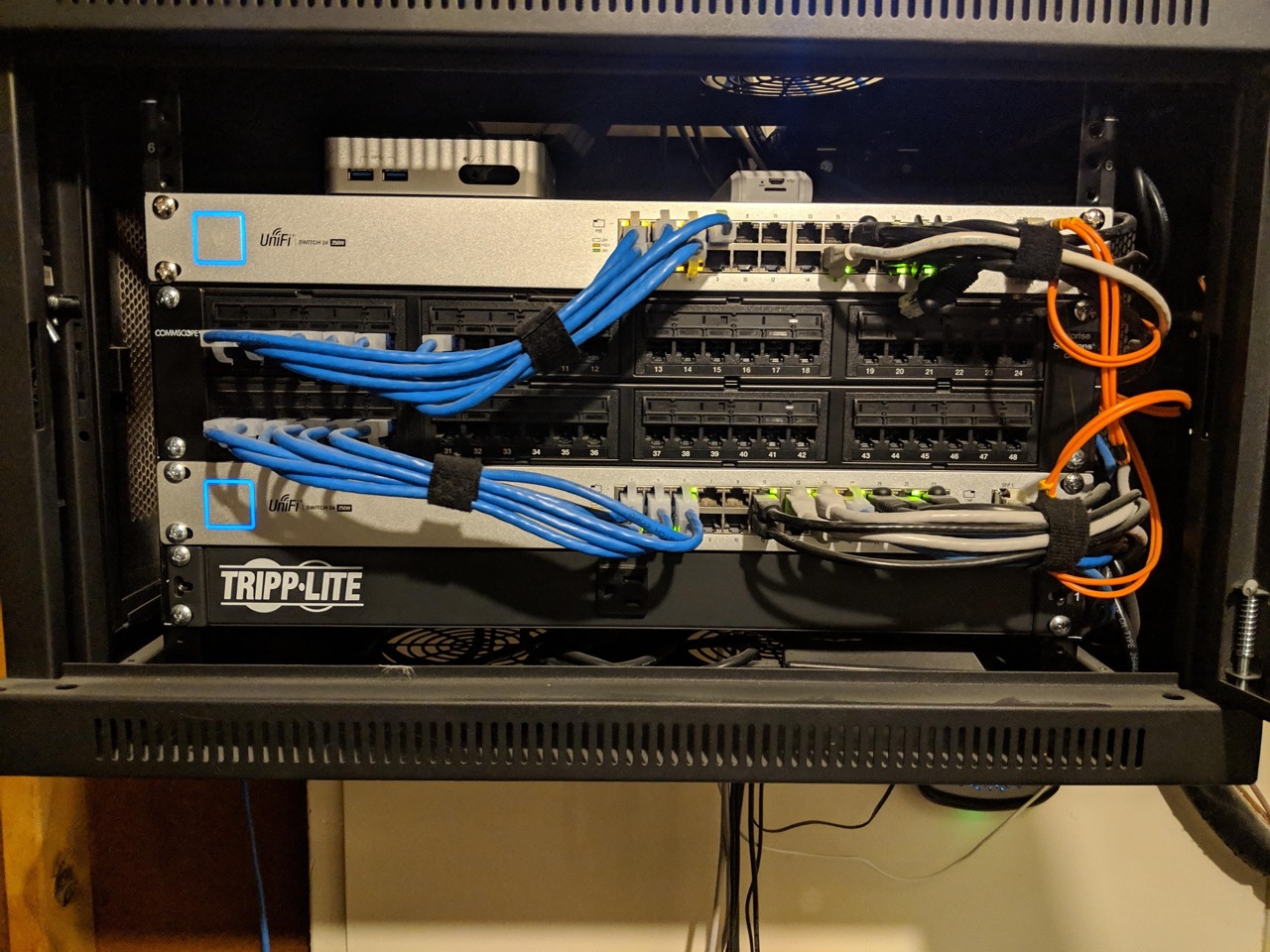Introduction
Welcome to the world of server racks! If you’re new to the concept or are considering adding a 15U server rack to your setup, you’re in the right place. In this article, we’ll delve into the world of 15U server racks, exploring their definition, benefits, types of equipment they can house, considerations when purchasing, installation and setup process, as well as maintenance and management tips.
When it comes to managing networking equipment, servers, and other hardware, having a dedicated and organized space is crucial. This is where server racks come into play. Server racks are specially designed cabinets that provide a secure and efficient environment for housing and organizing various IT equipment.
A 15U server rack refers to the size or height of the rack unit. U, short for “rack unit,” is a standard unit of measurement used to determine the vertical space within a server rack. Each U represents 1.75 inches or 44.45 millimeters of vertical space. Therefore, a 15U server rack measures approximately 26.25 inches or 666.75 millimeters in height.
The 15U size is popular among small to medium-sized businesses and organizations that require a compact and versatile solution for their networking and server needs. It provides ample space for housing multiple servers, switches, routers, and other equipment while maintaining a relatively small footprint.
Now that we understand the basics, let’s explore the benefits of using a 15U server rack in the next section. Whether you’re a business owner looking to upgrade your IT infrastructure or an IT professional seeking efficient equipment organization, a 15U server rack has a lot to offer.
What is a 15U server rack?
A 15U server rack is a type of equipment storage solution designed to house and organize IT equipment in a compact and efficient manner. The “15U” refers to the height measurement of the rack unit, where each U represents 1.75 inches or 44.45 millimeters of vertical space. Therefore, a 15U server rack has approximately 26.25 inches or 666.75 millimeters of usable space.
These server racks are typically made of sturdy materials such as steel or aluminum, ensuring durability and stability. They feature a front and rear frame, as well as adjustable vertical rails, which allow for easy installation and customization to fit different equipment sizes.
One of the key advantages of a 15U server rack is its compact size. It offers a significant amount of vertical space for storing servers, switches, routers, patch panels, and other networking equipment while occupying a relatively small footprint. This makes it an excellent choice for businesses and organizations with limited space availability.
Furthermore, a 15U server rack provides efficient cable management solutions, with most models offering cable routing options and integrated cable management arms. This helps to eliminate clutter and ensure proper airflow within the rack, preventing overheating and promoting optimal equipment performance.
Another vital feature of a 15U server rack is its security. These racks are often equipped with locking front and rear doors, as well as side panels, which protect the equipment from unauthorized access and physical damage. This level of security is crucial, especially for businesses that handle sensitive data and rely on uninterrupted network connectivity.
In addition to their functional features, 15U server racks are designed with aesthetics in mind. They often have a sleek and professional appearance, allowing them to blend seamlessly into different office environments or server rooms.
Overall, a 15U server rack provides an ideal solution for businesses and organizations that require compact, organized, and secure storage for their IT equipment. In the next section, we will explore the various benefits that these racks offer in greater detail.
Benefits of using a 15U server rack
When it comes to managing IT equipment, a 15U server rack offers several key advantages. Let’s explore some of the benefits that make these racks a valuable asset for businesses and organizations:
- Space efficiency: The compact size of a 15U server rack makes it an excellent choice for businesses with limited space. It provides a significant amount of vertical storage space while occupying a small footprint, allowing for efficient utilization of available floor or rack space.
- Easy organization: A 15U server rack helps keep your IT equipment organized and easily accessible. With adjustable vertical rails, you can customize the rack to fit different-sized equipment, ensuring a neat and orderly setup. This facilitates easier cable management and equipment installation.
- Improved airflow and cooling: Proper airflow is crucial for maintaining optimal equipment performance and preventing overheating. A 15U server rack is typically designed with ventilation features and cable management options to promote adequate airflow and cooling within the rack. This helps extend the lifespan of your equipment and reduces the risk of downtime due to heat-related issues.
- Enhanced security: Security is a top priority when it comes to IT equipment. 15U server racks often come with locking front and rear doors, as well as side panels, providing an added layer of protection against unauthorized access. This helps safeguard your valuable equipment from theft, tampering, or damage.
- Scalability: As your business grows and your IT infrastructure expands, a 15U server rack offers scalability. With its adjustable rails and flexible configuration options, you can easily add or remove equipment to accommodate changing needs.
- Professional appearance: A 15U server rack is designed to have a sleek and professional appearance, making it suitable for various office environments or server rooms. Its clean and organized layout not only improves aesthetics but also reflects a level of professionalism and attention to detail.
These are just a few of the many benefits that a 15U server rack provides. Whether you’re a small business, a growing organization, or an enterprise, investing in a 15U server rack can help you optimize your IT infrastructure and ensure efficient management of your equipment.
Types of equipment that can be housed in a 15U server rack
A 15U server rack offers versatile storage options for a wide range of IT equipment. Let’s explore the different types of equipment that can be housed in a 15U server rack:
- Servers: One of the primary purposes of a server rack is to house servers. A 15U server rack can accommodate multiple rack-mount servers, whether they are rack-mounted blade servers, tower servers, or 1U/2U/4U server units. These servers act as the backbone of your network infrastructure, storing and processing data, handling application requests, and managing network resources.
- Networking equipment: A 15U server rack is an ideal solution for housing networking equipment such as switches, routers, and patch panels. These devices allow for network connectivity, data transmission, and the management of network traffic. By placing them in a server rack, you can centralize your networking infrastructure and ensure easy access and efficient cable management.
- Data storage devices: Storage devices like Network Attached Storage (NAS) systems or disk arrays can also be housed in a 15U server rack. These devices are responsible for storing and managing large amounts of data, providing centralized and reliable storage solutions for businesses of all sizes.
- Power management units: Power management units, including power distribution units (PDUs) and uninterruptible power supplies (UPS), play a crucial role in ensuring uninterrupted power supply to your IT equipment. These devices can be conveniently installed in a 15U server rack to provide easy access and minimize cable clutter.
- Other accessories: Additionally, a 15U server rack can accommodate various accessories such as monitor and keyboard shelves, cable management panels, and blanking panels. These accessories help optimize the rack space, improve organization, and enhance the overall functionality of the rack setup.
It’s worth noting that the specific equipment you can house in a 15U server rack may vary depending on the dimensions and design of the rack. Therefore, it is important to consider the size and weight limitations of the rack when selecting and installing your IT equipment.
With the ability to house servers, networking equipment, data storage devices, power management units, and other accessories, a 15U server rack provides a flexible solution for organizing and managing your IT infrastructure effectively.
Considerations when buying a 15U server rack
Choosing the right 15U server rack is essential for a well-organized and efficient IT infrastructure. Here are some key considerations to keep in mind when purchasing a 15U server rack:
- Size and dimensions: Ensure that the dimensions of the 15U server rack align with your available space and the size of your IT equipment. Consider the width, depth, and height of the rack, taking into account any additional space required for cable management and ventilation.
- Weight capacity: Check the weight capacity of the 15U server rack to ensure that it can support the weight of your equipment. Consider the combined weight of the servers, switches, routers, and other devices that will be housed in the rack.
- Accessibility and cable management: Look for a 15U server rack that provides easy access to equipment and efficient cable management solutions. Features such as removable side panels, front and rear doors, adjustable rails, and cable routing options can make installation, maintenance, and cable organization much easier.
- Security: Consider the security features of the server rack, including lockable doors and side panels, to protect your valuable equipment from unauthorized access and physical damage.
- Ventilation and cooling: Adequate airflow and ventilation are essential for preventing overheating and ensuring optimal equipment performance. Check for ventilation features such as perforated doors, fans, and cable management options to promote proper airflow and cooling within the rack.
- Compatibility: Ensure that the 15U server rack is compatible with your existing IT equipment. Check the industry-standard rack mounting requirements (such as EIA-310) and make sure the rack is compatible with rack-mount servers, switches, and other devices.
- Ease of installation: Consider the ease of installation and setup of the server rack. Look for racks that come with detailed instructions, pre-threaded holes, and necessary installation hardware to simplify the setup process.
- Future scalability: Anticipate your future needs and consider whether the 15U server rack allows for scalability and expansion. Look for options to add additional shelves, accessories, or extra rack units to accommodate future equipment requirements.
By carefully considering these factors when purchasing a 15U server rack, you can ensure that you select a rack that meets your specific needs in terms of space, equipment compatibility, organization, security, and scalability.
Installation and setup of a 15U server rack
Setting up a 15U server rack requires careful planning and attention to detail to ensure proper installation and optimal functionality. Here are the steps involved in the installation and setup process:
- Measure and prepare the space: Measure the area where you plan to install the 15U server rack. Ensure that there is sufficient clearance for airflow and access. Prepare the space by clearing any obstacles or debris that may hinder the installation process.
- Assemble the rack: Follow the manufacturer’s instructions to assemble the 15U server rack. Start by connecting the front and rear frames, attaching the adjustable vertical rails, and securing the side panels. Use the provided installation hardware and tools to ensure a sturdy and stable construction.
- Position the rack: Carefully move the assembled server rack into its designated position. Ensure that the rack is level and secure on the floor or mounted using appropriate brackets or anchors. Take note of any floor or wall weight restrictions and make sure the rack is within the specified limits.
- Install equipment: Place your servers, switches, routers, and other equipment into the rack. Use the adjustable vertical rails to position the equipment at the desired height. Ensure that the equipment is securely mounted and that the weight is evenly distributed within the rack.
- Cable management: Organize and route the cables within the server rack. Use cable management options such as cable trays, management arms, and Velcro ties to prevent cable tangling and ensure proper airflow. Label the cables for easy identification and future maintenance.
- Power and network connections: Connect the power cables from your equipment to power distribution units (PDUs) or power outlets. Ensure that the power supply is appropriate for the equipment’s requirements. Connect the network cables to switches, routers, or patch panels, ensuring proper connectivity and network configuration.
- Test and configure: Power on the equipment and test for proper functionality. Configure the network settings, IP addresses, and any specific software or security settings required for your IT infrastructure. Perform tests to ensure that all devices are communicating correctly and that the rack is functioning as expected.
During the installation and setup process, it is important to follow safety guidelines, such as wearing appropriate protective gear and ensuring proper lifting techniques when handling heavy equipment or the server rack itself.
Keep manufacturer documentation and instructions handy for reference during the installation process and consult with experienced professionals if needed. Proper installation and setup of your 15U server rack will ensure a reliable and organized IT infrastructure that meets your business needs.
Maintenance and management of a 15U server rack
Maintaining and managing a 15U server rack is crucial for ensuring the smooth operation and longevity of your IT infrastructure. Here are some key practices to consider:
- Regular cleaning: Dust and debris can accumulate within the server rack over time, potentially impeding airflow and causing equipment overheating. Regularly clean the rack, removing any dust or dirt using compressed air or a soft cloth. Ensure that the cleaning process does not disrupt any connections or cables.
- Cable management: Regularly check and organize the cables within the server rack. Ensure that cables are properly routed, secured, and labeled for easy identification. Periodically inspect and replace any damaged or frayed cables to maintain optimal network performance.
- Server monitoring: Implement a server monitoring system to keep track of the health and performance of your servers. Monitor critical parameters such as temperature, power consumption, and system utilization. This helps detect any anomalies or issues early on and allows for proactive maintenance and troubleshooting.
- Equipment maintenance: Follow the manufacturer’s recommended maintenance schedules for your servers, networking equipment, and other devices within the 15U server rack. Regularly update firmware, perform necessary software patches, and conduct routine hardware inspections to ensure optimal performance and security.
- Security measures: Protect your server rack from unauthorized access by securing the physical infrastructure. Maintain strong access controls, including lockable doors, side panels, and racks. Regularly review and update user access permissions to limit entry to authorized personnel only.
- Temperature and airflow management: Keep a close eye on the temperature within the server rack and ensure adequate airflow. Monitor the rack’s ventilation and cooling systems, such as fans or air conditioning units, to maintain optimal temperature levels. Proper airflow prevents equipment overheating and extends the lifespan of your IT infrastructure.
- Documentation and organization: Maintain thorough documentation of your server rack setup, including equipment configurations, IP addresses, and cable mapping. Regularly update this documentation when changes are made to the rack. This helps with troubleshooting, future expansions, and overall management of your IT infrastructure.
It is also important to conduct periodic audits and reviews of your server rack setup. Assess the rack’s performance, identify potential bottlenecks or areas for improvement, and make necessary adjustments to optimize its functionality.
By following these maintenance and management practices, you can ensure that your 15U server rack operates efficiently, mitigates potential risks, and supports a reliable and secure IT infrastructure.
Common accessories for a 15U server rack
Enhance the functionality and organization of your 15U server rack with these common accessories:
- Shelves: Additional shelves provide extra storage space within the rack. You can use them to hold non-rack mountable equipment, such as a monitor, keyboard, or other peripherals.
- Cable management panels: Cable management panels help organize and route cables within the server rack. They ensure proper airflow, prevent cable tangling, and make it easier to trace and manage cables during maintenance or troubleshooting.
- Patch panels: Patch panels serve as central connection points for network cables. They allow for easy and organized termination of Ethernet cables, simplifying cable management and facilitating efficient network connectivity.
- Power distribution units (PDUs): PDUs provide convenient power distribution and control within the server rack. They offer multiple power outlets to connect your equipment, allowing for easy power management and reducing cable clutter.
- Blanking panels: Blanking panels fill empty spaces in the rack, preventing the entry of dust, improving airflow, and promoting proper cooling efficiency. They also improve the overall aesthetic appearance of the rack.
- Fans and fan trays: Cooling fans or fan trays help maintain proper airflow and dissipate heat within the server rack. They are especially important for racks located in environments with limited natural cooling or high ambient temperatures.
- Rack mount drawers: Rack mount drawers provide storage space for small tools, cables, manuals, or other accessories. They help keep your equipment organized and within easy reach.
- Cable management arms: Cable management arms assist in organizing and managing longer or heavier cables. They provide support and prevent cable strain, reducing the risk of accidental disconnections or damage to the cables and equipment.
These accessories help optimize space utilization, improve cable management, enhance airflow and cooling, and provide additional functionality to your 15U server rack.
When selecting accessories, ensure compatibility with your rack’s dimensions and mounting options. Consider your specific needs and the equipment you plan to install to determine which accessories will best suit your requirements.
Conclusion
Investing in a 15U server rack can greatly improve the organization, functionality, and security of your IT infrastructure. With its compact size and versatile storage capabilities, a 15U server rack provides an efficient solution for housing servers, networking equipment, and other critical IT devices.
Throughout this article, we explored the definition and benefits of using a 15U server rack. We discussed the types of equipment that can be housed in a 15U server rack, highlighting its versatility for various IT components. We also emphasized the importance of considering factors such as size, weight capacity, cable management, and security when purchasing a 15U server rack.
The installation and setup of a 15U server rack require careful planning and attention to detail. By following the recommended steps, you can ensure a proper and functional installation. Additionally, we discussed the significance of maintenance and management practices, such as regular cleaning, cable management, monitoring, and security measures, to ensure the continued performance and longevity of the server rack and the housed equipment.
Lastly, we explored common accessories that can further enhance the functionality and organization of a 15U server rack, such as shelves, cable management panels, and power distribution units.
In conclusion, a 15U server rack offers an efficient and compact solution for organizing and managing your IT infrastructure. By selecting the right rack, implementing proper installation and maintenance practices, and utilizing compatible accessories, you can create a reliable, secure, and well-organized environment for your servers and networking equipment.







